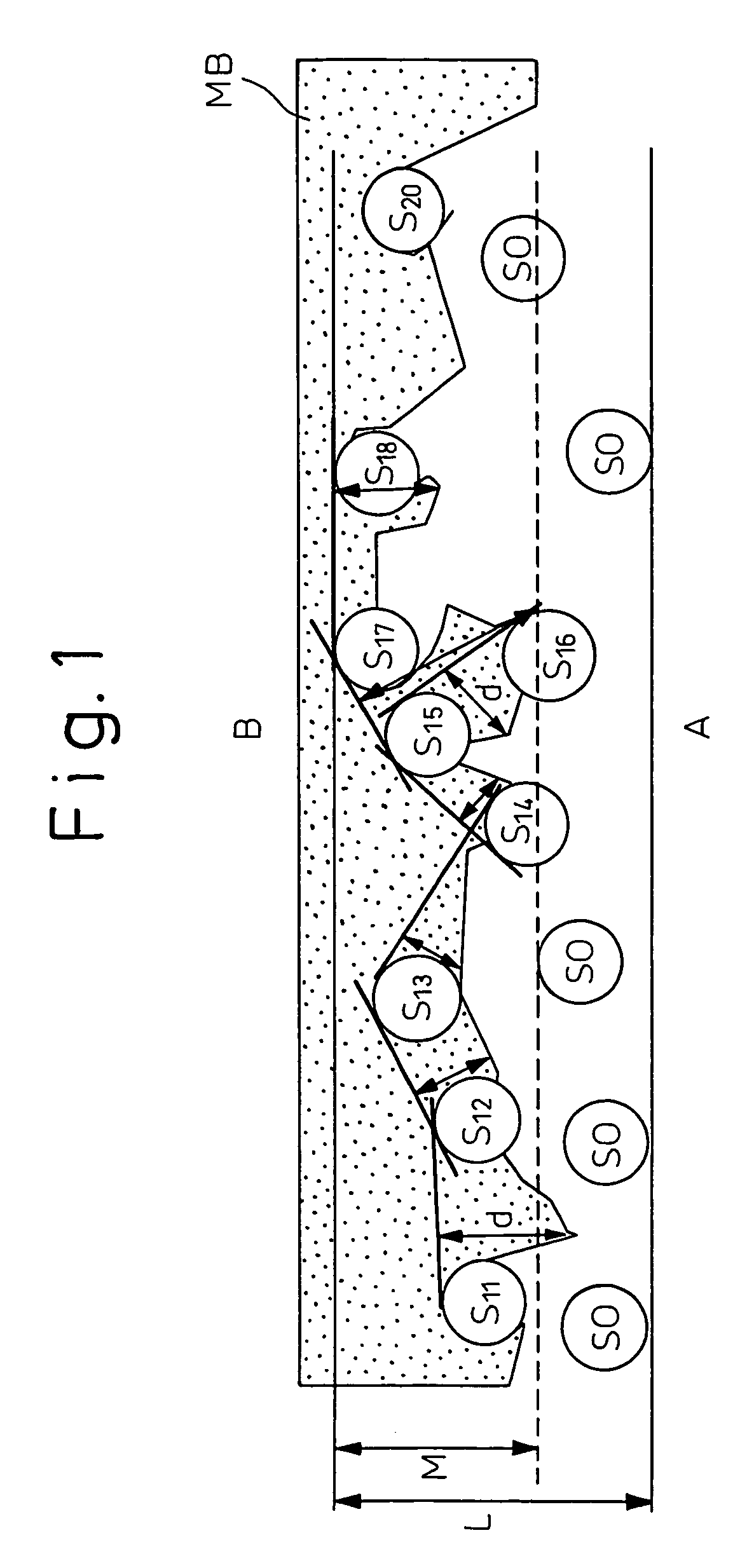High tenacity nonwoven fabric
a nonwoven fabric, high tenacity technology, applied in weaving, light beam reproducing, instruments, etc., can solve the problems of easy deformation and destruction of the structure of the nonwoven fabric, increased gaps among the fine fibers, and increased fine fibers, so as to ensure and stably conduct the
- Summary
- Abstract
- Description
- Claims
- Application Information
AI Technical Summary
Benefits of technology
Problems solved by technology
Method used
Image
Examples
examples
[0064] Examples of the present invention will be explained below. However, the present invention is in no way restricted thereto.
[0065] Specific properties referred to in examples and comparative Examples were obtained by the procedures described below.
[0066] (1) Measurements of Diameter (>m) of Fibers (Fiber Diameter)
[0067] Both ends, each 10 cm long, of a sample such as a fiber web and a nonwoven fabric are removed. A test piece, 1 cm×1 cm, is cut out from each region 20 cm wide of the fabric. The fiber diameter at 30 points of each test piece is measured with a microscope, and the average value of the measured values is calculated (numerical value beyond the first place of decimals being rounded). The average value is defined as the fiber diameter of the constituent fibers of the sample.
[0068] Apparatus used: VT-8000 (trade name, manufactured by KEYENCE Co., Ltd.)
[0069] Magnification in measurements: 1,000× for continuous filamentary fibers, and 2,500× for melt-blown fine fi...
examples 1 to 4
[0105] A filamentary fiber group of a polyethylene terephthalate for general purposes was extruded toward a transfer collecting face by spin bonding at a spinning temperature of 300° C., and spun at a spinning rate of 3,500 m / min. The spun fibers were adequately opened by corona charging in a charging amount of about 3 μC / g to give an unbonded filamentary fiber web composed of filaments that had an average fiber diameter of 13 μm and having a basis of weight of 25 g / m2 (5 cm variation of basis of weight of 15% or less (uniformity)), on a collecting net face.
[0106] On the other hand, a polyethylene terephthalate having a solution viscosity ηsp / C of 0.50 was spun by melt blowing at a spinning temperature of 300° C. and a heating air temperature of 320° C. with injection air of 1,000 Nm3 / hr / m to give a random web of extremely fine fibers (average fiber diameter of 1.6 μm) having a basis of weight of 10 g / m2. The random web was directly injected toward the above filamentary fiber web. ...
examples 5 to 8
[0113] Stacked three-layer webs (SW2 / MW / SW1) prepared under the same conditions as in Examples 1 to 4 were thermocompressively bonded while the emboss temperature was varied so that the tear tenacities in the MD direction attained given values. Laminated three-layer nonwoven fabrics in which the structures were fixed were thus prepared. Table 2 shows the properties for use of the nonwoven fabrics.
PUM
| Property | Measurement | Unit |
|---|---|---|
| Temperature | aaaaa | aaaaa |
| Length | aaaaa | aaaaa |
| Length | aaaaa | aaaaa |
Abstract
Description
Claims
Application Information
 Login to View More
Login to View More - R&D
- Intellectual Property
- Life Sciences
- Materials
- Tech Scout
- Unparalleled Data Quality
- Higher Quality Content
- 60% Fewer Hallucinations
Browse by: Latest US Patents, China's latest patents, Technical Efficacy Thesaurus, Application Domain, Technology Topic, Popular Technical Reports.
© 2025 PatSnap. All rights reserved.Legal|Privacy policy|Modern Slavery Act Transparency Statement|Sitemap|About US| Contact US: help@patsnap.com



